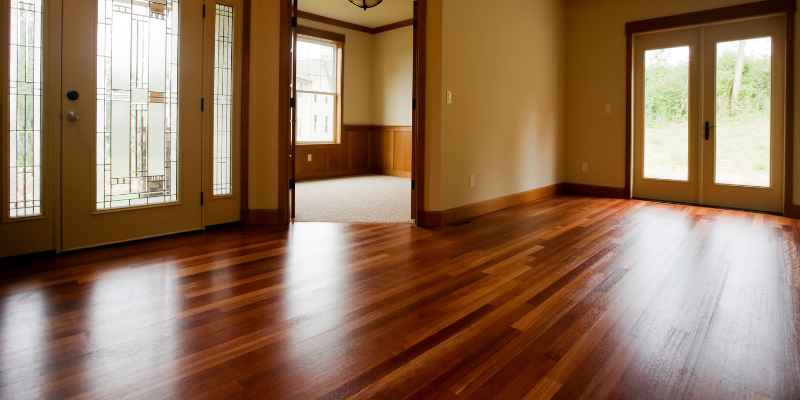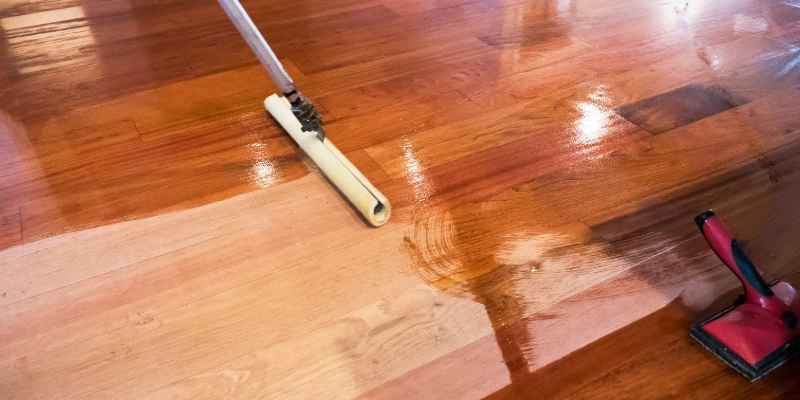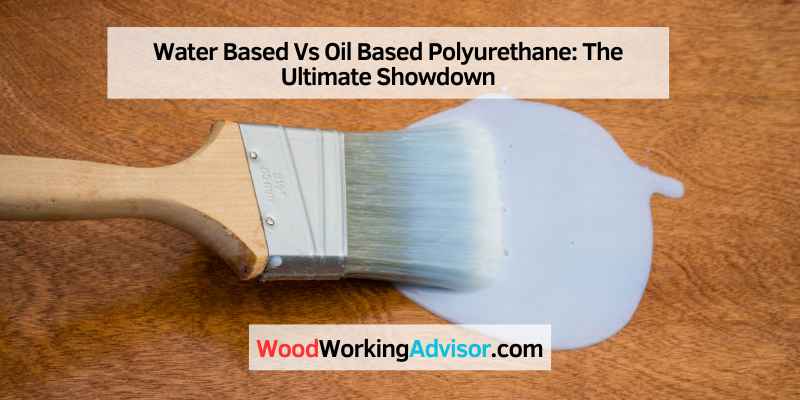Water-based polyurethane is a durable, eco-friendly finish that dries quickly, while oil-based polyurethane provides a more traditional and long-lasting option with a slower drying time. A strong debate exists between the use of water-based and oil-based polyurethane.
Both options have their advantages and disadvantages, making it crucial to understand the key differences before making a decision. Water-based polyurethane offers a more eco-friendly and fast-drying finish, making it a popular choice for many. On the other hand, oil-based polyurethane provides a traditional, durable option with a slower drying time that allows for better self-leveling and a smoother finish.
Understanding the pros and cons of each type of polyurethane will help you make an informed decision about which one is best suited for your specific project or application.
Water Based Polyurethane
Water-based polyurethane is a popular choice for wood finishing due to its many benefits. Unlike its oil-based counterpart, water-based polyurethane is made from water-based resins and solvents, making it more environmentally friendly and easier to clean up.
Benefits
- Water-based polyurethane has a lower odor compared to oil-based polyurethane, which can be quite pungent. This makes it more suitable for indoor applications where ventilation may be limited.
- It dries faster than oil-based polyurethane, allowing for shorter project completion times. This is especially beneficial when working on time-sensitive projects or in environments with high humidity levels.
- Water-based polyurethane is less likely to yellow over time, ensuring the natural beauty of the wood is preserved. This makes it a great choice for lighter wood tones and clear finishes.
- It offers excellent durability and protection against scratches, stains, and chemicals. This makes it suitable for high-traffic areas such as floors, tabletops, and cabinets.
- Water-based polyurethane also has a lower VOC content compared to oil-based polyurethane. VOCs (volatile organic compounds) are harmful chemicals that contribute to indoor air pollution and can cause health issues.
Drawbacks
- Water-based polyurethane can be more expensive than its oil-based counterpart, adding to the overall project cost.
- It may raise the grain of the wood, requiring additional sanding and preparation before application.
- Water-based polyurethane may not penetrate the wood’s surface as deeply as oil-based polyurethane, resulting in slightly less depth of color and grain enhancement.
- While highly durable, water-based polyurethane may not offer the same level of protection against heat and moisture as oil-based polyurethane.

Oil Based Polyurethane
Oil based polyurethane is a popular choice among homeowners and professionals when it comes to enhancing the beauty and durability of wooden surfaces. This type of polyurethane is made up of oil-based components and offers a range of benefits.
Benefits:
- Long-lasting protection: Oil based polyurethane forms a durable protective layer on the surface of the wood, safeguarding it from scratches, stains, and moisture damage.
- Enhanced appearance: This type of polyurethane enhances the natural beauty of the wood by deepening its color and highlighting the grain patterns.
- Easy to apply: Oil based polyurethane is relatively easy to apply, making it a suitable choice for DIY enthusiasts. It flows smoothly and self-levels, allowing for an even and professional-looking finish.
- Low maintenance: Once applied, oil based polyurethane requires minimal maintenance. Its robust formula resists wear and tear, reducing the need for frequent reapplication.
- Highly durable: Oil based polyurethane creates a strong and resilient protective layer that can withstand heavy foot traffic, making it ideal for high-traffic areas like hallways, living rooms, and kitchens.
Drawbacks:
- Drying time: Oil based polyurethane typically has a longer drying time compared to its water-based counterpart. This means you may need to wait for several hours before applying additional coats or using the surface.
- Strong odor: The oil-based composition of this polyurethane results in a strong smell during application and drying. Adequate ventilation is necessary to minimize the effects of the odor.
- Yellowing over time: Oil based polyurethane has a tendency to yellow over time, especially when exposed to direct sunlight. This can alter the original color of the wood and may require periodic maintenance to maintain its aesthetic appeal.
- Higher Volatile Organic Compounds (VOC) content: Oil based polyurethane contains higher levels of VOCs compared to water-based polyurethane. It is important to follow proper safety precautions, such as using a mask and working in a well-ventilated area, when applying this type of polyurethane.
Comparison
When it comes to choosing the right polyurethane for your project, one of the biggest decisions is whether to go with a water-based or an oil-based option. Both types have their own unique set of characteristics that can impact the final outcome of your finish. In this article, we will compare water-based and oil-based polyurethane in terms of application, durability, and appearance to help you make an informed decision.
Application
Water-based polyurethane is known for its ease of application. It has a thinner consistency compared to its oil-based counterpart, making it easier to spread evenly. It also dries faster, allowing for shorter wait times between coats. On the other hand, oil-based polyurethane has a thicker consistency, which can make it more challenging to apply. It requires longer drying times between coats, sometimes up to 24 hours.
Moreover, water-based polyurethane has a lower odor compared to oil-based polyurethane, making it more suitable for indoor projects. It is also non-toxic and dries clear, minimizing any potential discoloration. Oil-based polyurethane, on the other hand, tends to have a stronger odor and can yellow over time. Therefore, if you are working on a project that requires a fast-drying, low odor, and non-yellowing finish, water-based polyurethane is the way to go.
Durability
When it comes to durability, both water-based and oil-based polyurethane have their advantages. Water-based polyurethane offers excellent resistance to abrasion, water, and chemicals. It is also less likely to crack or yellow over time. On the other hand, oil-based polyurethane provides a harder and more durable finish. It is better suited for high-traffic areas and surfaces that are prone to scratches or wear and tear.
Moreover, if you are working on a project that requires frequent refinishing, oil-based polyurethane is more forgiving. It can be easily recoated without the need for extensive sanding or preparation. However, keep in mind that oil-based polyurethane takes longer to fully cure and harden, so you will need to avoid heavy use for a few days or even weeks, depending on the conditions.
Appearance
In terms of appearance, both water-based and oil-based polyurethane can produce a beautiful finish. However, there are some differences to consider. Water-based polyurethane tends to have a clearer and lighter appearance compared to oil-based polyurethane, which can deepen the color of the wood. If you prefer a natural or lighter finish, water-based polyurethane is the better choice.
On the other hand, if you want to enhance the natural beauty and richness of the wood, oil-based polyurethane is the way to go. It adds depth and warmth to the surface, resulting in a more traditional or classic look. However, keep in mind that oil-based polyurethane can darken over time, especially on lighter wood species.

Frequently Asked Questions On Water Based Vs Oil Based Polyurethane
What Is Better Water Based Or Oil-based Polyurethane?
Water-based polyurethane is better than oil-based because it dries faster, has no strong odor, and is easier to clean up with water. It also doesn’t change the color of the wood as much as oil-based polyurethane, and it is more resistant to yellowing over time.
What Is The Downside Of Water Based Polyurethane?
Water based polyurethane has a few downsides. It dries quickly, making application tricky and potentially leaving brush marks. It may also require more coats for the desired finish. Additionally, it can raise the grain of the wood, needing sanding between coats.
What Are The Advantages Of Water Based Polyurethane?
Water-based polyurethane offers several advantages. It dries quickly, has low odor, and is easy to clean up with water. It provides a clear and durable finish, offers excellent resistance to wear, and protects against spills and stains. It also dries with minimal yellowing compared to oil-based polyurethane.
Why Use Oil-based Polyurethane?
Oil-based polyurethane is preferred for its durability and long-lasting finish on wood surfaces. It provides excellent protection against scratches, stains, and moisture. Its oil-based formulation enhances the natural beauty of wood while creating a tough, protective layer.
Conclusion
Choosing between water-based and oil-based polyurethane for your project is dependent on your specific needs and preferences. Water-based polyurethane offers a faster drying time, low odor, and easy cleanup, making it perfect for indoor applications. On the other hand, oil-based polyurethane provides a durable and long-lasting finish that is ideal for high-traffic areas and outdoor use.
Consider your project requirements and desired final result to make an informed decision.


